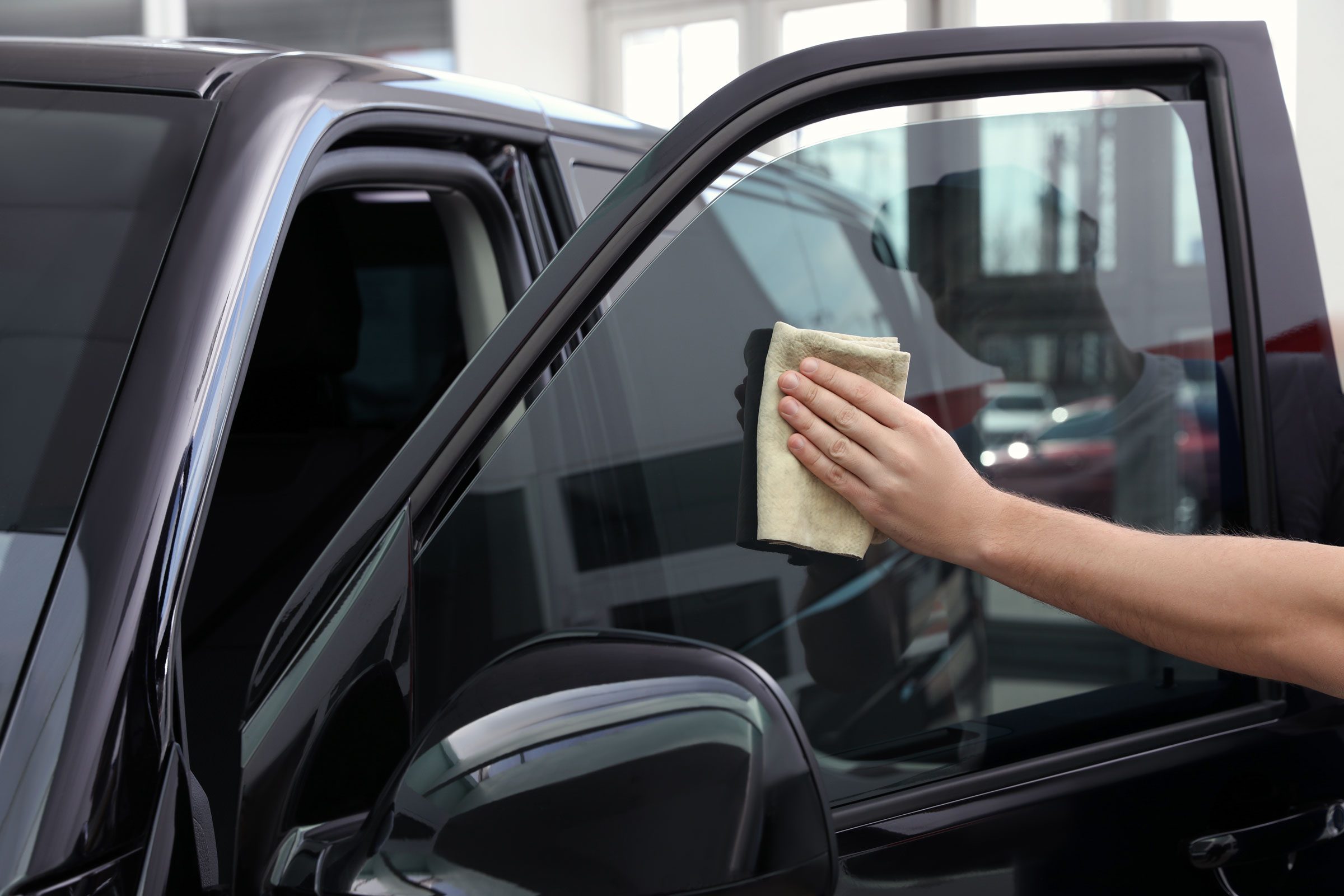Window Tinting Regulations: What You Need to Know Before Tinting Your Automobile
Window Tinting Regulations: What You Need to Know Before Tinting Your Automobile
Blog Article
The Process of Expert Window Tinting Explained
From selecting the right film type to the careful prep work of home windows, each action plays a critical duty in attaining a perfect application. Complying with these initial prep work, the cautious cutting and application of the movie demand accuracy to avoid blemishes.
Choosing the Right Window Movie
Picking the right window film includes understanding various aspects that affect both aesthetic charm and performance. The initial consideration is the kind of film, which can vary from dyed, metalized, to ceramic films. Dyed films mostly provide privacy and aesthetic improvement, while metalized movies reflect warm and UV rays, boosting power efficiency. Ceramic films, although typically much more costly, deal superior performance without compromising exposure.
Following, consider the movie's Visible Light Transmission (VLT) percent, which establishes exactly how much light goes into the room. A reduced VLT provides greater privacy and warm denial but may minimize all-natural light dramatically. Additionally, the film's solar warm gain coefficient (SHGC) is crucial; a lower SHGC suggests better thermal performance, aiding to keep indoor comfort.

Preparing the Windows
When the suitable window film has actually been picked, the following step is completely preparing the windows for setup. This preparation is important for accomplishing ideal bond and guaranteeing a flawless appearance post-installation.
The very first task entails cleaning up the windows meticulously (window tinting). A high-quality glass cleanser is vital, preferably one that is ammonia-free to stay clear of harmful any home window seals or color materials. Making use of a lint-free cloth or paper towels, technicians need to remove any type of dirt, dirt, or grease, paying unique interest to the sides and edges where particles frequently gathers

Reducing the Film
A specific strategy to reducing the movie is necessary for ensuring a perfect fit on the ready windows. This action needs both skill and focus to information, as inaccuracies can lead to unsightly gaps or overlaps that compromise the aesthetic and practical qualities of the color.
Before reducing, the professional must measure the window measurements accurately, representing any kind of distinct forms or shapes. It is recommended to make use of premium home window film, as this material has a tendency to be more forgiving throughout the reducing news process. The film is normally laid flat on a tidy, smooth surface, and a sharp utility knife is used to make certain clean edges.
To accomplish optimum results, numerous experts make use of templates created from previous setups or make use of software to develop exact patterns. An usual strategy involves adding an extra margin to the design template, permitting for changes throughout the application stage.
Moreover, cutting the film in a controlled atmosphere lessens the danger of impurities influencing the adhesive side. By adhering to these precise methods, home window tinting specialists can ensure that the film not only fits effortlessly yet also carries out efficiently with time, improving both look and functionality.
Using the Tint
After thoroughly reducing the movie to the right dimensions, the following step entails applying the color to the window surface area. This process starts with making certain that the home window is clean and without any type of dirt, particles, or deposits that could impact attachment. A customized cleaning option is often made use of, followed by thorough drying out with a lint-free cloth.
As soon as the surface is prepared, the installer will meticulously position the tint movie against the glass. It is crucial to line up the film properly to prevent misplacement, as any click resources mistakes can lead to an unprofessional look. To facilitate this, the installer might utilize a light mist of application remedy on the sticky side of the movie, permitting for small repositioning if essential.
Utilizing a squeegee, the installer will certainly then start to press the movie onto the glass, working from the facility in an outward direction to eliminate air bubbles and ensure a firm bond. This strategy is critical, as it guarantees a smooth and remarkable finish. Throughout the application, focus to detail is crucial to avoid folds or imperfections, making certain that the tint not just enhances aesthetic appeals yet likewise provides the preferred capability.
Last Inspection and Treatment
The last evaluation is an essential action in the home window tinting procedure, guaranteeing that the setup meets both aesthetic and useful requirements. During this stage, experts diligently analyze the mounted tint for any type of imperfections, such as bubbles, folds, or imbalances. A thorough evaluation also includes inspecting the adherence of the movie to the glass, as useful link well as its harmony and total appearance.
After the examination, appropriate care and upkeep guidelines are offered to the customer. It is vital to inform them concerning the suggested timeline for cleaning the tinted home windows, normally recommending a delay of a minimum of one month after installation to permit the glue to heal completely. Clients ought to be educated on appropriate cleaning items and methods, stressing the evasion of ammonia-based cleansers that can damage the tint.
In addition, experts ought to encourage clients on the significance of routine upkeep to lengthen the life of the color. This includes regular look for indications of wear or damage and responding promptly to any kind of concerns. By making certain a thorough last evaluation and offering clear treatment standards, window tinting professionals boost consumer complete satisfaction and the longevity of their work.
Verdict
The expert home window tinting process incorporates numerous essential actions that ensure top notch results. Picking the proper film kind, preparing the windows diligently, precisely reducing the film, and applying it with accuracy are important for attaining a perfect surface.
Report this page